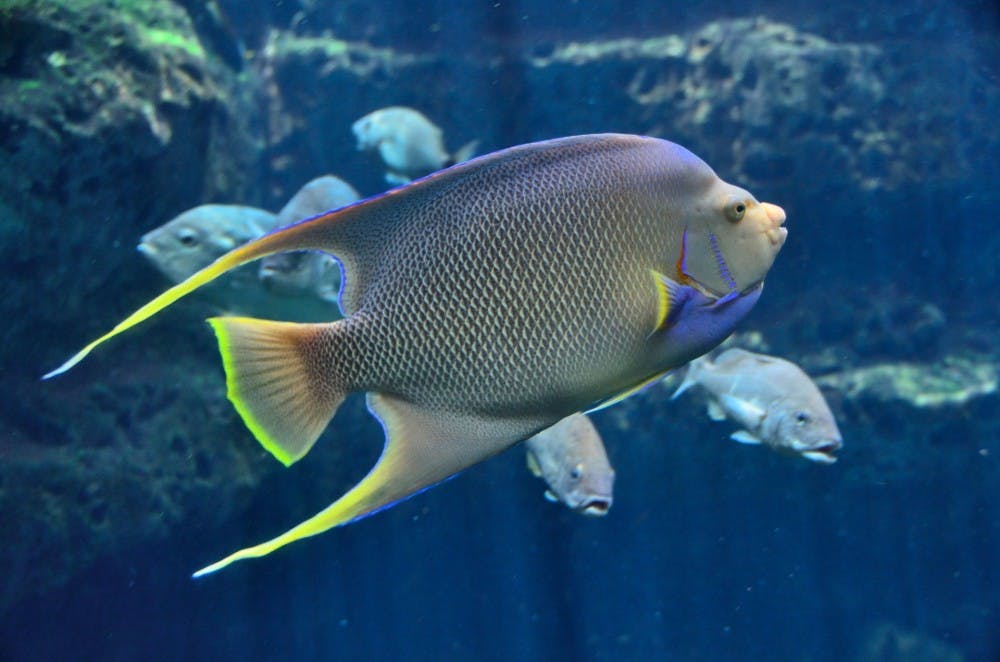Recent studies have shown that some species of fish can show symptoms of major depressive disorder. While one might find this claim bizarre and dismiss fish as simple organisms incapable of complex emotion, there are actually several striking similarities we share with fish.
Julian Pittman, a professor at Troy University in Alabama, utilizes zebrafish in his research to develop better therapeutic medications for depression.
“The neurochemistry is so similar that it’s scary,” Pittman said in an interview with The New York Times.
Fish are often thought of as simple organisms, but Pittman claims otherwise.
“[T]here is a lot we don’t give fish credit for,” he said.
In fact, the zebrafish (whose scientific name is Danio rerio) has become a rising star in translational neuroscience research. Not only do these small fish possess all the major neurotransmitters and receptors in mammals, there is also a high degree of genetic overlap between humans and zebrafish.
According to Pittman, approximately 70 percent of the human genome has at least one obvious zebrafish orthologue. This benefit, in addition to the zebrafish genome being fully sequenced, makes the zebrafish a great candidate for translational research.
Another benefit zebrafish provide is their cost-effectiveness.
They are able to reproduce and develop rapidly and can be housed in large numbers at a time.
In fact, zebrafish exhibit anxiety-like and approach-avoidance behaviors that make them ideal for studying depression.
One of the most popular paradigms used to observe stressed-related behavior in zebrafish is the novel tank test.
In the novel tank test, a zebrafish is first introduced into an unfamiliar environment to induce stress. At first, the fish usually freezes, swims erratically or stays close to the walls (thigmotaxis). Over time the fish will become curious and gradually swim towards the upper regions of the tank.
However, when a zebrafish is treated with antidepressants for two weeks and then introduced to a new environment, it reveals opposite behavior.
It shows significant increased top region exploration and reduced bottom level dwelling, which is evidence for less anxiety.
After years of research and watching zebrafish swim in their tanks, scientists know that fish can lose interest in their surroundings, just like clinically depressed people.
Culum Brown is a behavior biologist at Macquarie University in Sydney primarily interested in fish biology with an emphasis on behavioral ecology.
He is the assistant editor of the Journal of Fish Biology and has published more than 100 research papers on fish cognition.
“You can tell. Depressed people are withdrawn. The same is true of fish,” Brown said in an interview with The New York Times.
While there are numerous advantages to adopting zebrafish as models for depression, there are limitations too.
A commonly identified problem is that fish have a limited ability to model the complex emotional turmoil associated with depression.
Diego A. Pizzagalli, director of the Center of Depression, Anxiety and Stress Research at Harvard Medical School, takes on a multidisciplinary approach to investigate depression.
“There’s the obvious issue that ‘we cannot ask animals how they feel,’” Pizzagalli said in an interview with The New York Times. Although serotonin and dopamine fluctuations in fish and rats may be similar, Piazzagalli says they do not show the whole picture. “[They do not] capture the entire spectrum of depression as we know it,” he said.
The zebrafish has become a promising organism for translational research that will serve to improve our understanding of major depressive disorders.





